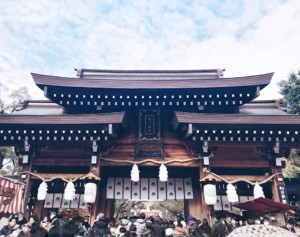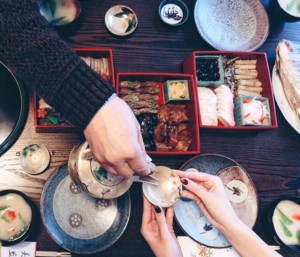The Chinese New Year was celebrated during February with colorful dragons, Chinese food, gift exchanging, and fireworks. Japanese culture is greatly influenced by China; however, Japanese people have a different way of celebrating the New Year’s.
The New Year’s holiday is a time for family. People who work in the city go back to their hometowns and meet with their families and relatives. On New Year’s Eve, some people watch T.V. on which countdowns are performed by famous artists, comedians, or celebrities. Others head off to shrines to be the first ones to pray for a good year when the New Year commences.
Early in the morning, some go out to mountain tops or places where you could see the very first sunrise of the year. As the day goes on and shopping malls start to open, millions of people rush into their favorite stores. During the New Year’s holiday, almost all stores have a big bargain sale. So, despite the crowded shops, people love going shopping from the beginning of the year. Families with children have a special custom in which parents, grandparents, aunts, and uncles give money to the children. Hatsu-mairi, an act of praying for a good year at a shrine, is a popular custom. Around the shrine, there are many stalls and small stores that sell traditional Japanese meals and snacks. There are also game stands for children to enjoy.
Osechi is a traditional Japanese meal that people eat only for the New Year’s. The traditional meal sometimes lasts for three days depending on families. So, naturally, the amount of cooking and food is overwhelming. Most families cook their own osechi as a tradition, but recently, department stores and restaurants sell the Japanese meal for those who do not have the time to cook. Osechi is not one dish; it consists of a variety of dishes, each representing a type of good fortune. For example, shrimps, which are common and popular for osechi, symbolize longevity. The long whiskers signify a long beard, and the curved body is a symbol of living until your back bends with age. Eating osechi is a way of praying for a happy and healthy life.


